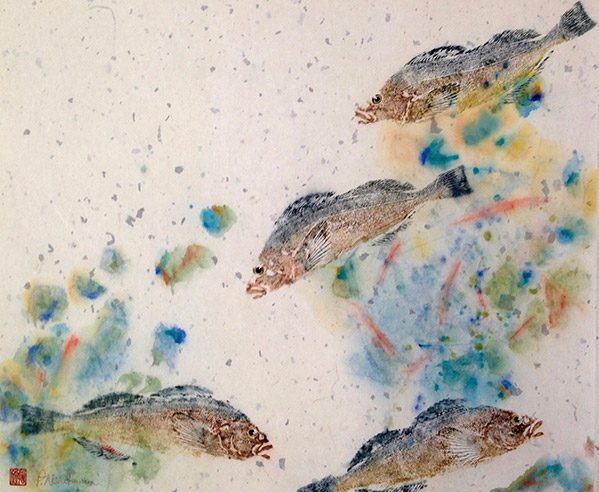For If I Lived in the Ocean, artist Paula Nishikawara creates an immersive underwater environment filled with evidence of humanity’s footprints. The artist tells stories of past and present throughout the space with bamboo poles, jute sacks, massive beds of plastic kelp and traditional Japanese gyotaku (made from real fish and hand-made paper).
In what the experimental artist calls a museum intervention, waste plastics and traditional art, weave together to create a hopeful environmental message. Plastic is one of the most troubling materials in the ocean today, while Jute, extensively used in shipping is one of the most sustainable and environmentally friendly. In exhibiting these materials together Nishikawara has created a provocative display that offers layers of meaning and presents challenges and possibilities for the future.
If I Lived in the Ocean asks an important question: What will it take to be completely responsible and create circular systems that will protect the environment and sustain life?
Nishikawara’s artistic works are a reflection of the natural world we live in and how we inhabit it. She explores polarities, materiality and the spiritual character of all things. The culture and aesthetics of Nishikawara’s Japanese and Dutch ancestry has noticeably informed and influenced her artistic expression.
Her gyotaku work has travelled throughout the U.S., Canada and Australia as part of a Smithsonian Institute Exhibition and she has shown work in the USA, Germany, Nigeria and Canada. She’s a graduate of the Emily Carr College of Art and Design in Vancouver, BC. and has had studios in Berlin, Germany and Lagos, Nigeria.
Exhibit runs to October 24th, 2021.
www.vanmaritime.com


